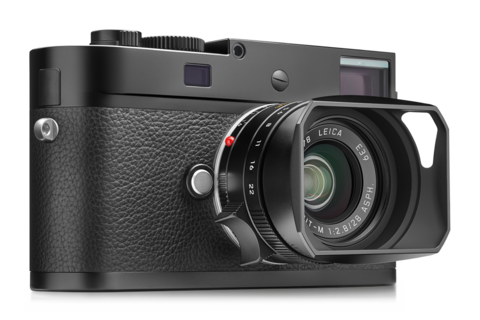A Digital Film Camera
writer: russell j.t. dyer; posted: jul 2018; revised: aug 2018
In a recent article on Staying Creative, I argued that an LCD display on a digital camera is a distraction and affects one’s creativity and that a film camera is simpler and more conducive to taking good photos. However, there are obvious problems with using a film camera. In this article, I’ll discuss these drawbacks and benefits to digital and film cameras, and end by offering a third choice.
FujiFilm X100F Primary Controls
The Complexity of Digital Cameras
Digital cameras are wonderful: you can take hundreds of pictures in a day without using film, and you can process easily all of the images on your computer. Nevertheless, in an attempt to provide as many features as possible, camera makers have lost sight of what’s essential and include too many options — and often make it difficult to control basic exposure settings.
For example, I own a FujiFilm X100F digital camera. It’s excellent, but it has too many settings. The user manual contains a drawing of the camera that highlights forty-seven items which provide information or may be adjusted. Add to that the choices available through the LCD menu and the list exceeds one-hundred.
Having so many choices is a major creative distraction, making it difficult to take a simple photo. Too easily and too often, good photos are lost, moments are lost.
One solution would be to disable the LCD screen — assuming your camera has an optical viewfinder. I’ve done this on my Fuji X100F. It works well, but there are still so many buttons that I sometimes accidentally modify the settings. I then have to reenable the LCD to fix it.
The Simplicity of Film Cameras
Film cameras are inherently simpler than digital ones. The user manual for my Leica M3 film camera has a drawing of the camera that indicates only fourteen items. Since it doesn’t have an LCD, there are no menus containing more settings.
When you use a mechanical film camera like a Leica M3, all you can do is adjust the shutter and aperture, point the camera, focus, and then click. There are no other adjustments to distract you. Since there’s no LCD, you have to visualize clearly the image you want to make. You’re fully engaged in the creative process.
The problem with a film camera is that it requires buying film and waiting afterwards until it’s developed — unless you’re willing to develop your own film. Because film cameras don’t record the exposure settings on the negatives, you may be unsure of what you did right or wrong with some photos. That effects artistic development since it makes it difficult to try new techniques. You could make a note of the settings of every photo, but that will also detract from the creative process.
A Better Solution
There is an alternative to film cameras and typical digital cameras. From 2016 to 2018, Leica manufactured a digital camera with minimal controls like a film camera. It’s called the Leica M-D. It looks very much like the other Leica M cameras made in recent years, except that it doesn’t have an LCD screen.
On the back, where the LCD would normally be located, there’s a flat wheel for setting the ISO. On top there are two knobs: one for setting shutter duration — there’s an automatic option — and another for turning the camera on for single, continuous, or timed shutter release mode. There is also a small button to set exposure compensation. Aperture and focus are set manually on the lens.
The optical viewfinder provides some information. You’ll see red digits indicating the shutter speed and the exposure compensation — if you set it. There are no other controls or information provided.
Without the LCD, there are no distractions or aides. You have to see the image in the viewfinder and decide before you click if it’s a good shot. This will lead to better photos — the first time.
When you finish shooting, you may remove the memory card and import the images into your computer. Using a program like Adobe Lightroom, you’ll see the exposure settings and other data. You can change white balance, crop images, and much more. You’d do this on your computer, not on your camera when you’re creating pictures.
Leica M-D Decisive Moments
To better appreciate the Leica M-D camera with its few controls and no LCD, let’s think about how it would work at a decisive moment. Suppose it’s a sunny day and you plan to take pictures in the park. Before leaving home, you set the camera’s ISO to 200, the shutter speed to automatic, and the aperture to 8, initially. Now that the camera and lens are ready, you head out.
After some walking in the park, you see some people interacting and think it’s a nice moment to photograph. You could change the lens aperture, but probably won’t. You raise the camera and calmly compose the scene, focus the lens, and then press the shutter release button. There’s nothing else to do, no LCD to review. So you quietly walk away without disturbing the people you photographed.
Let’s review that again: change the aperture, compose the shot, focus, and click. That’s all you do and all you can do: There are no temptations, no distractions, no frustrations. It’s as simple as a film camera, but there’s also no film to develop and no negatives to scan, but it produces high-resolution images files. It’s like a digital film camera.
The Leica M-D has everything you need and nothing more so that you may stay in creative mode when shooting photos. It’s simple.




